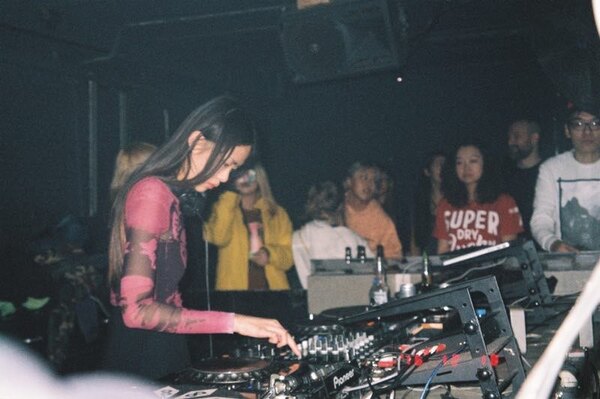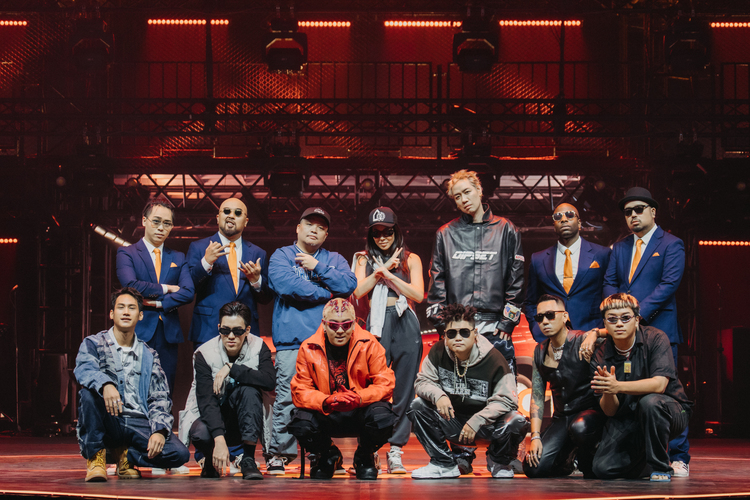The first time I visited the city was in November 2016. I was invited as a guest DJ for Genome 6.66 mbp’s party at Dada Shanghai. I had only started DJing by accident a few months ago after moving back to Taipei from London, some friends asked me to play at their party. As someone prone to nervousness, being far away from so-called musical epicenters without expectations, the idea of playing music that I like felt achievable as my little practice for stage fright. The Genome party was my first gig outside of Taipei. Meeting and being challenged and supported by the Genome crew, who only started three months ago by young locals at that time, as well as dancing responses from the crowd on that night, the energetic exchange is something that I will never forget.
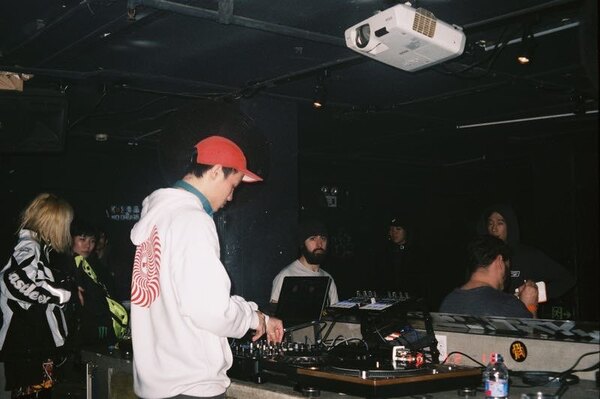
2016, genome 6.66 mbp at The Shelter
I was lucky enough the second visit happened a month later, in December 2016, to play at the last Genome party at The Shelter before it closed down. Originally a bomb shelter, the club was founded by Gaz Williams in 2007, it provided a space for music lovers to host, play and listen to dance music that doesn’t fit under traditional house and techno. Over time, The Shelter became a catalyst for the development of the city’s underground club scene. The first few years consisted mostly of local hip-hop and reggae nights, plus international guests, with the majority of the crowd made up of expats.
However, things started to shift around 2015, and Chinese kids took over, the last two years were when the local scene began to see changes. Labels such as Gaz’s own SVBKVLT, Genome, Push & Pull, and club nights with their distinctive tastes like Tzusing’s Stockholm Syndrome, and Asian Dope Boys, to name a few. Despite the club closing down due to the ending of the lease, there was a sense of excitement in the air, as well as stubbornness and an urgent need for the next location. Shanghai had the openness and fierce atmosphere of something happening. Not long after, international media began to notice.
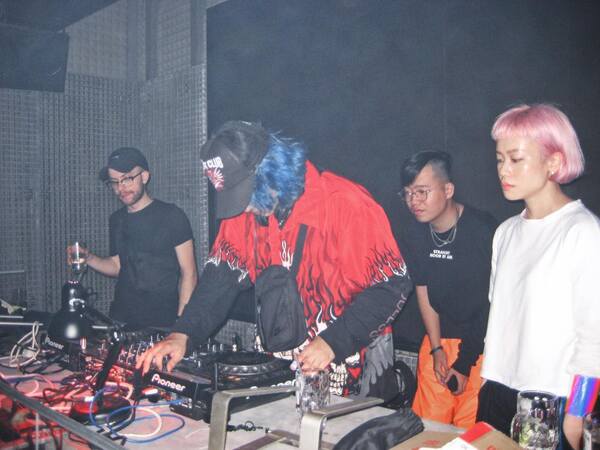
I started spending the majority of my time in Shanghai the next spring, and six months after The Shelter closed down, All was opened by Gaz as the follow-up. It was not trying to recreate the past, with a more focused musical direction for both international and local acts, and a sleek interior designed by visual artist/Shelter regular Kim Laughton. The eclectic music policy attracts people with a genuine curiosity for something different, usually with styles mixed, taken out of their original contexts.
The venue serves as a bar during weekdays, with open deck nights Cosign on Wednesdays for up-and-coming acts, and club nights during weekends. Other than music, All have hosted a variety of events throughout the years, such as exhibitions, talks, music workshops, karaoke nights, and independent label markets. It provided creatives with a home, as well as the freedom to experiment.
Another interesting feature that All started was the LED screens, behind the DJ booth for shows, also video flyers at the entrance. Doing so encourages and highlights collaborations, hence club nights with installations and/or visuals happen regularly and organically. For example, Sclera by All is a club night that features a visual artist each time to curate their own installation and music lineup, and Lure is a night hosted by 3D artist Wang NewOne.
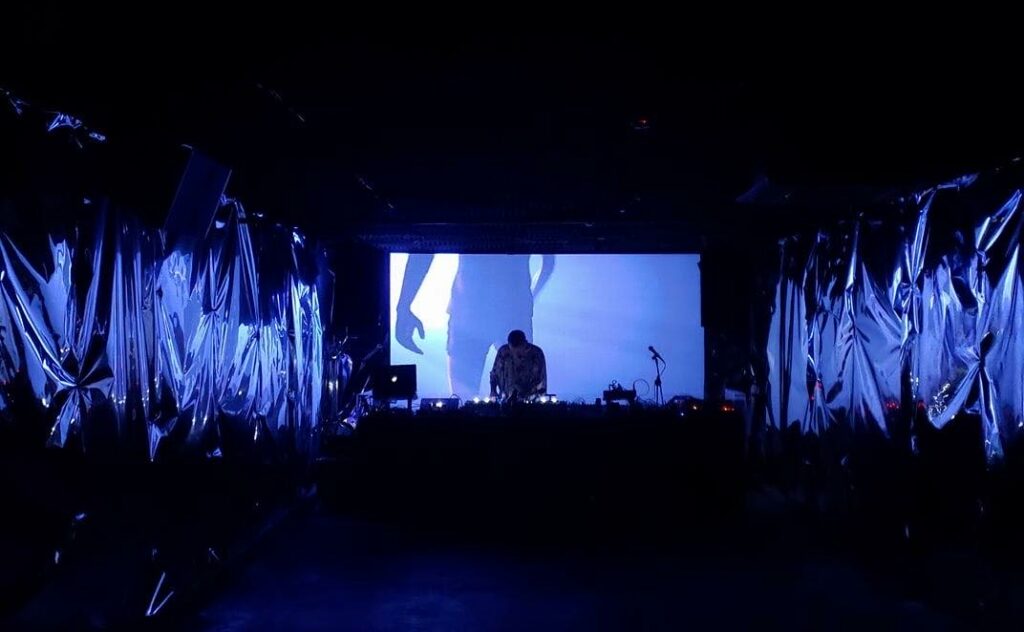
Later on, Release parties often include altering and decorating with visuals, lighting, and set designs, made possible by musicians working with different fields through mutual respect, and the ability to buy materials cheaply within China via methods such as Taobao, something difficult to achieve in places like Europe. The club started with short video clip promos on WeChat and Instagram, and club nights in other places soon followed.
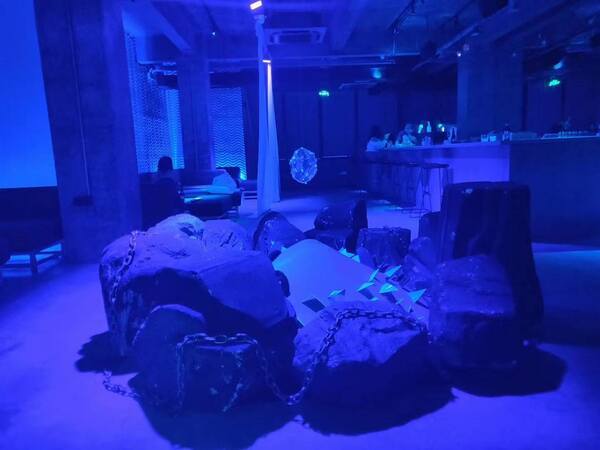
scintii “Times New Roman” release party, installation by ying
In China, authority is the major uncertainty, with the alternative music and nightlife culture operating in a perpetual grey area, which can be exciting but always frustrating. Shifts in policy within a city or district can lead to crackdowns and closures. Things started to get increasingly difficult from 2018 onwards, with clubs and events suffering as a result.
Not long after came the pandemic. By the time Covid hit in early 2020, things were already in a slightly precarious position. The music scene was still operating relatively well in 2020, Shanghai weathered things as well as it could, artists and DJs were doing domestic tours, and clubs, in general, doing okay. However, closed borders and the impact of lacking cultural exchange eventually started to take their toll. Fatigue took hold in 2021, people were longing for fresh air, and many left the city, including myself, especially after the tightening grip of the lockdown in 2022.
Perhaps there is almost always an arc for cities that serve as cultural epicenters that people tend to gravitate towards. Deciphering what makes the build, maybe the rise of Shanghai is not so different than the others. By allowing people to experiment freely, the alternative club scene slowly builds itself with creatives that support each other, as well as more open-minded music lovers.
Hearing people talk about their fond memories at The Shelter, and seeing the progression of All, many young Chinese became inspired to look out for interesting music, even to open new venues and host nights in their cities, despite the challenges of starting with little to no club culture beforehand. It is never easy for art and culture to exist and grow, as it needs a substantial amount of time, and is often overlooked, forced, or even taken for granted. However, the profound ripple effect it has on individuals and places, by giving spaces to play, taking risks, and sticking to them over time, usually proves itself to be worthwhile.
